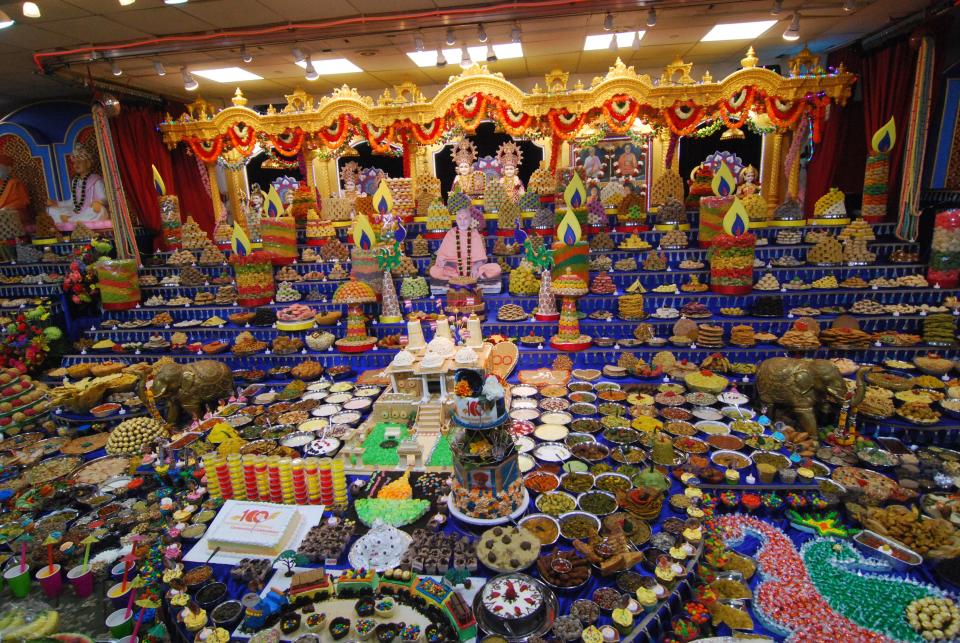What is Diwali? 4 things to know about the Indian New Year celebration
Diwali, also called Deepavali, is India's grandest and most important holiday of the year. Much like Christmas is to Christians, Diwali holds great importance to Hindus and other faiths, as it honors the victory of light over darkness, good over evil, and knowledge over ignorance.
The Festival of Lights is celebrated by decorating homes with lamps and candles to symbolize the inner light that protects people from spiritual darkness. Over the course of five days, the observance is commemorated with revelry, family gatherings and a vibrant display of colors.
As growing diversity in the United States pushes the holiday into the foreground, here are a few more things to know about the festivity to understand its significance and the traditions that accompany it.
When is Diwali celebrated?
Diwali usually falls in October or November, depending on the lunar calendar. This year Diwali will be on Sunday, Nov. 12, and celebrations usually last for several days.
Is Diwali a national holiday in the United States?
Although Diwali is celebrated in many U.S. communities, it is not currently recognized as a federal holiday in the United States. There is, however, a growing movement advocating for its official recognition. U.S. Rep. Grace Meng, D-N.Y., first vice chair of the Congressional Asian Pacific American Caucus, announced on May 26, 2023, that she introduced the Diwali Day Act. This bill aims to establish Diwali as the 12th federally recognized holiday in the United States. A month earlier, in April, Pennsylvania declared Diwali an official state holiday.
The Indian diaspora sees Diwali celebrated beyond its country of origin. It is an official holiday in several countries including Fiji, Guyana, Malaysia, Singapore, Myanmar, Mauritius, Sri Lanka, Nepal, Trinidad and Tobago, and Jamaica.

Why are Americans celebrating Diwali?
There are more than 4.4 million people of Indian heritage in the United States. Many celebrate Diwali to maintain a connection to cultural roots or observe Hindu, Jain, and Sikh religious practices. However, the appeal of Diwali is reaching outside of the Indian American community, as people from diverse backgrounds are drawn to its vibrant and festive pageantry. Diwali celebrations in the U.S. have now become a platform for promoting cultural awareness and diversity, offering an opportunity for others to learn about and actively engage in this culturally rich tradition.
What are the 5 days of Diwali?
Each day of Diwali is marked by its own distinct observances:
Day 1: Preparation day involves cleaning homes and shopping for gold or kitchen utensils for good luck.
Day 2: Homes are decorated with clay lamps and colorful rangoli patterns on the floor to symbolize prosperity.
Day 3: The main day of the festival. Families gather for Lakshmi puja, a prayer to Goddess Lakshmi, followed by feasts and firework displays.
Day 4: This is the first day of the new year and it is marked with visits to friends and relatives and gift exchanges.
Day 5: Brothers visit their married sisters for a meal and to nurture kinship.
What is eaten during Diwali?
Distinct from other Indian celebrations, Diwali is a time of indulgence, rather than fasting. The Diwali table is adorned with a variety of dishes, but it is the sweets, known as "mithai," that is the featured honeypot. These Indian sweets are more like "sweetmeats" than typical candies, often made with nuts or vegetables simmered in sugar and milk. Popular mithai include:
Halwa - a sweet, flavorful carrot-based delight
Laddu (laddoo) - sweet flour balls
Barfi - a sweet fudge made with condensed milk
Gulab jamun - a type of syrup-soaked donut holes
Kheer - cardamom-infused creamy rice pudding
Apart from the assortment of sugary treats, Diwali meals also feature a variety of vegetable-based snacks and main dishes. Savory appetizers like filled triangular pastries called samosas, crispy bhaji (or pakora), steamed Idli, a type of rice cake, and ghee-fried Puri are popular during this festive occasion. Vegetarian meals like the Paneer Makhani, a creamy and indulgent curry, are also typically on the menu.
Contact reporter Anitra Johnson at ajohnson@delawareonline.com. Join her on the Facebook group Delaware Voices Uplifted. Support her work and become a subscriber.
This article originally appeared on Delaware News Journal: What to know about Diwali, the Indian New Year celebration

